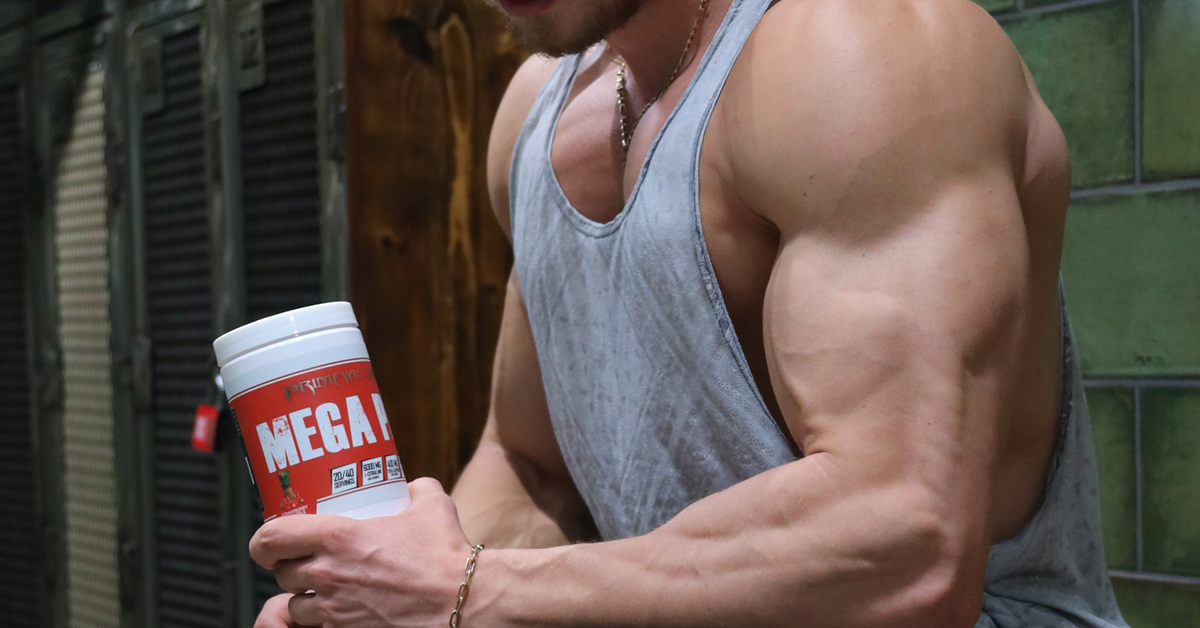The squat is one of the best exercises you can do for building big, strong legs.
And there are an endless variety of squat variations you can use, in the event you’re not made for the traditional barbell back squat or have a history of injuries that prevent you from back squatting.
The focus of today’s article will be on how to improve your performance on the back squat, but many of the tips included can also be applied to other squat variations as well.
So, let’s get started!
Top 10 Tips for a Bigger Squat
#1 Train for Strength
“Strength” training and resistance training are often used interchangeably, but there are some notable differences between the two.
The primary difference is that training for “strength” entails using loads 85+% of your 1-RM for multiple sets of one to five reps.
Training with heavier loads also gets your body and mind accustomed to heavy weight, which will pay dividends to the rest of your lower body training.
#2 Don’t Neglect Accessory Exercises
To build a bigger squat, you invariably have to squat as this engrains proper technique, and it’s the lift at which you’re trying to improve. It only makes sense that if you want to improve a particular lift, you have to perform it, and perform it often (with good technique).
However, that doesn’t mean the only exercise you should perform is the squat.
The squat is a mighty powerful tool for building the lower body, but there are a number of other exercises that do a damn fine job as well and don’t come with the total body stress that heavy back squats do.
So, in addition to a steady “diet” of squats, you should complement them with assistance exercises that also strengthen the quads like leg presses, Bulgarian split squats, and lunges.
While these exercises hit the quads and glutes (much like squats), they emphasize different regions of the muscles, providing muscle and strength benefits that will pay dividends towards building up your squat numbers.
#3 Don’t Neglect the Hamstrings
Building off the previous point, don’t neglect your hamstrings in your pursuit of a bigger squat.
Yes, the squat is predominantly a quad and glute exercise, but that doesn’t mean the hamstrings don’t serve an important purpose.
Stronger hamstrings will provide a more stable base from which you can lower and press up out of the squat. It also helps prevent muscle imbalances between the front and back side of your leg, which could increase the likelihood for injuries.
In addition to squats, leg presses, lunges, etc., also make sure that you’re performing sufficient volume for your hamstrings -- deadlifts, Romanian deadlifts, leg curls of all kinds.
#4 Increase Frequency
If you’re serious about increasing your squat, the days of the bro split -- one time per week leg training are over.
Squatting multiple times per week increases technical and neuromuscular proficiency, which helps reduce any inefficiencies in your movement pattern.
If you’re squatting twice per week, alternate between heavy days and speed / volume days.
Also make sure these squatting sessions are separated by at least 48-72 hours to allow for adequate recovery.
#5 Drive Your Butt Down
One of the most common cues, beginners are told when squatting is to drive their hips backward before squatting.
This transforms the squat into some kind of awkward, half-breed squat-good morning.
You should allow the hips to naturally move back as you descend, but your focus at the start of the movement should not be on sitting “back”. It should be on driving your butt straight down between your legs.
To get in the proper mindset, assume your typical squat stance and place your hands, one on top of the other straight down in front of your body.
Now, squat straight down and imagine picking up a coin off of the ground.
This forces your legs to open and your knees to drive out over your toes.
Keep this mental cue in mind when squatting and watch your performance on the movement improve drastically.
This same cue holds true for all other types of squats as well -- goblet, front, landmine, etc.
#6 Maintain Upper Back Tightness
So often, when lifters get into moderate-to-higher rep ranges (6-20 reps per set), they’re form starts to break down -- elbows fly up, chest caves in, bar rolls up, etc.
This not only reduces your performance in the squat, but also significantly increases the likelihood for injury.
Focus on keeping your upper back tight and your elbows pulled down.
At the top of each rep (before descending), ensure that you’re gripping the bar tightly, and that your upper back and arms are locked into position. This prevents energy leaks in the kinetic chain and reduces the chance of injury.
#7 Find YOUR Squat Depth
A lot of keyboard warriors and internet “experts” will tell you that you “have” to use a certain squat stance or depth.
The truth is that we’re all built differently, and as such, our squat mechanics will all be a bit different from one another.
Some individuals are made to squat ass-to-grass. Others aren’t.
To get a good training effect from the squat, going ass to grass isn’t necessary (and isn’t advisable in all cases).
Going to parallel or slightly below is, though.
Squat to a natural depth, and then stand back up.
Partial squats (above parallel) place undue strain and shear stress on the front of your body, particularly the patellar tendon. It also reduces involvement of the glutes -- a valuable contributor to helping you get out of the hole.
In other words, squatting to proper death is vital for long-term knee health.
#8 Use Paused Squats
It can be tempting to dive bomb down and slingshot out of the hole when squatting, but we challenge you to pause in the hole for a second (or two).
Pause squats for you to remain stable and tight in the bottom position. It also teaches you to “own” the weight, not simply rely on momentum and the elasticity of your muscles to get the job done.
You can use pause squats as your alternate squatting pattern during the week,and it’s best to use submaximal loads when performing pause squats.
Expect to be sore in places you didn’t even remember you had after the first time or two performing pause squats. They’re torturous, but a great tool for busting through a plateau and building a bigger squat.
#9 Breathe Properly
The proper way to breathe during squatting is simple -- don’t breathe.
You read that right, you do not want to breathe in during the descent and breathe out during the ascent.
Take in a deep breath at the top, brace your core, and sink to the bottom while holding your breath. As you ascend, exhale powerfully as you approach the top of the rep.
Taking a deep breath before your squat fills the lungs with air, increases intra-abdominal pressure, and supports the spine.
#10 Head Forward
Heavy squatting demands supreme focus.
As such, you should not be looking side to side when squatting.
Your eyes should be directly straight forward or slightly downward.
Fix your gaze on a point in front of you and do not take your eyes off of that point.
Allowing your head to swivel or eyes to move increases the likelihood of you dumping forward, coming up on your toes, or having the bar pancake you -- all of which can lead to injury.
No matter what else is going on around you, when you’re under the bar, your sole focus is on moving the weight -- ignore all other superfluous movements and distractions.














Leave a comment
This site is protected by hCaptcha and the hCaptcha Privacy Policy and Terms of Service apply.